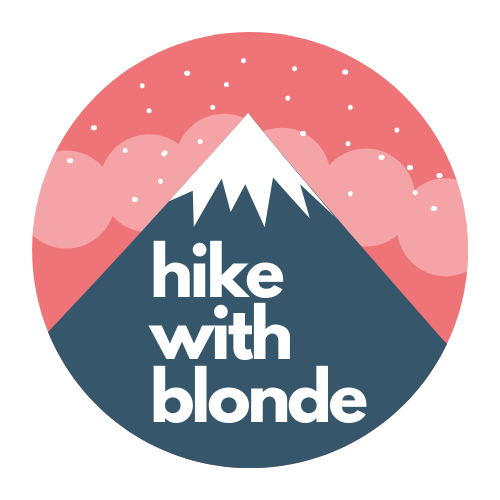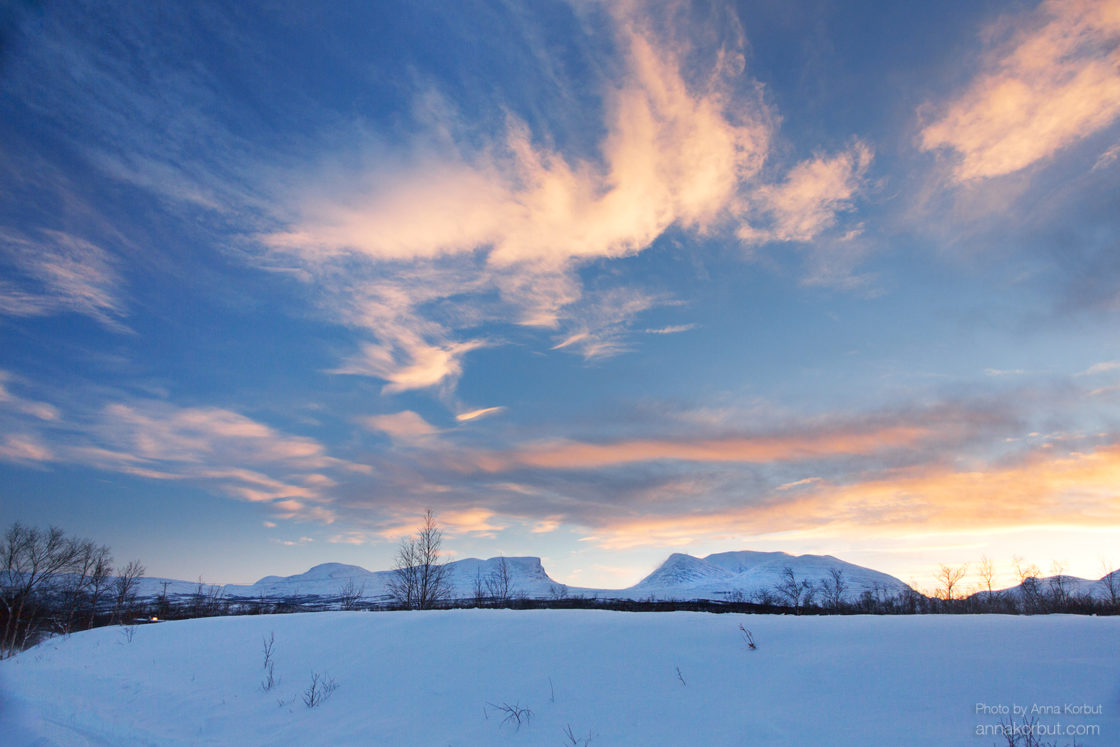1500 km by train
A slow journey gives you time to truly absorb the road and its changes. I travelled across Sweden by train—1500 km northwards and another 300 km inland. You can take a single overnight train or travel during the day with connections. The sun rises and sets, and I keep heading north. I managed to see most of Sweden: the damp and misty winter south, coastal towns full of ports and factories, and quiet, single-storey towns by the lakes.
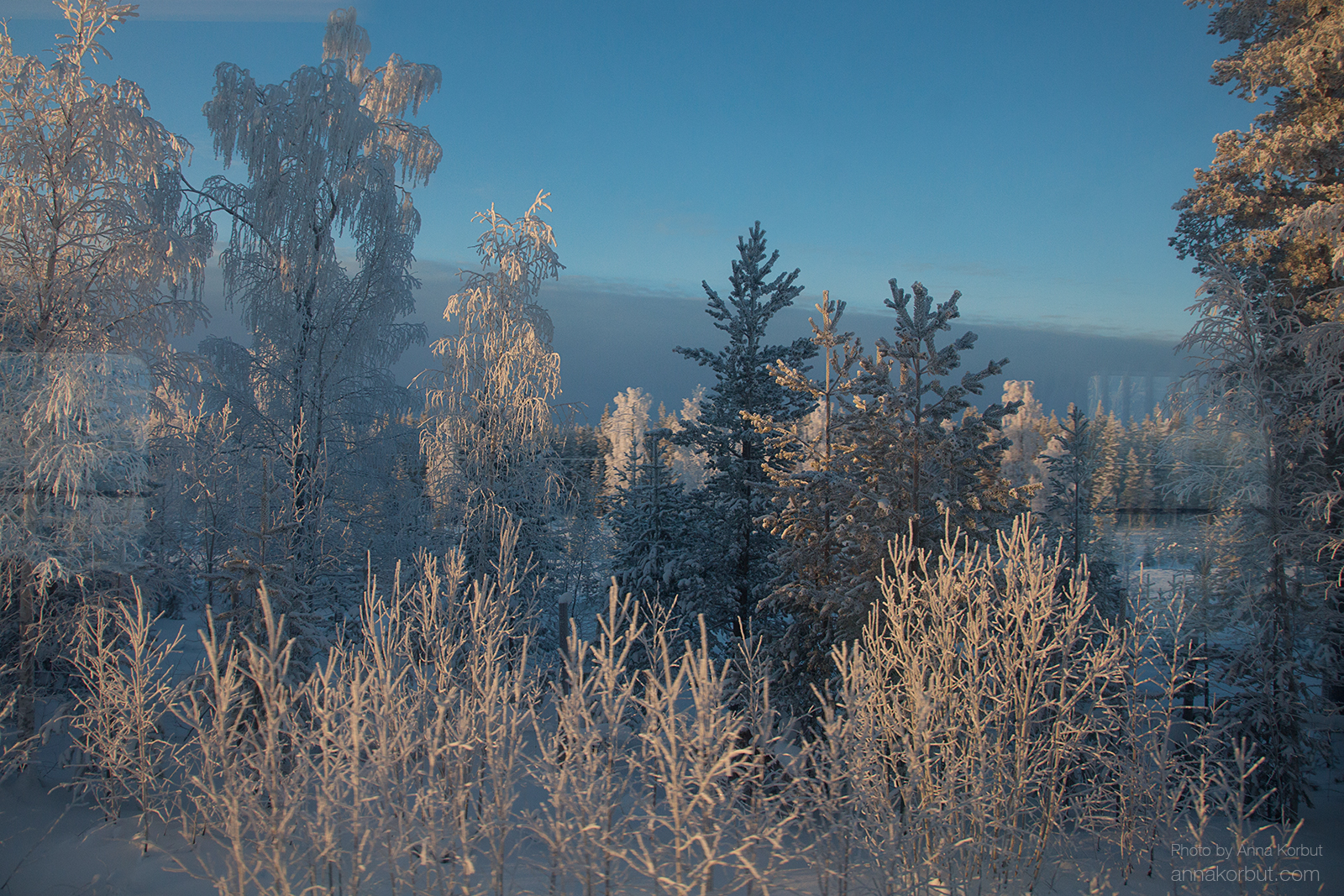
Snow-covered spruce forests in central Sweden somewhat resemble the Carpathians. The bent birch trees of the north mark the beginning of the tundra. Sweden is the largest exporter of timber and paper in Europe, so you can see clear-cuts in the forests. However, these are regulated and immediately replanted with young trees, so you won’t find the fatal bare patches like those in the Carpathians here.

I travelled to Abisko via Östersund with two changes. A week in Strömsund flashed by like a winter fairy tale. Even the night transfer in Sundsvall held a surprise for this tired traveller. It was night, I was hauling three bags. There was no one around, the frost and darkness, and an ominous cloud spreading over the paper mill. Then, suddenly, by the casino, a two-metre-tall figure passed by and wished me a safe journey. After a week in Sweden, that was the first time I met a Swede. I had been staying with Ukrainians, met Arabs on the streets, and in shops it was mostly elderly women working; all the Vikings seemed to have hidden away from me. And then, one appeared in the darkness of the deserted town. The drunken sommelier from the casino turned out to be a former musician. Though he had swapped his rock career, he sang a heartfelt Swedish song under the church for the Ukrainian guest. He gave me two discs with folk songs about rock in boots and saw me off to the train. The melody of that guttural Swedish chant stayed with me the whole journey.
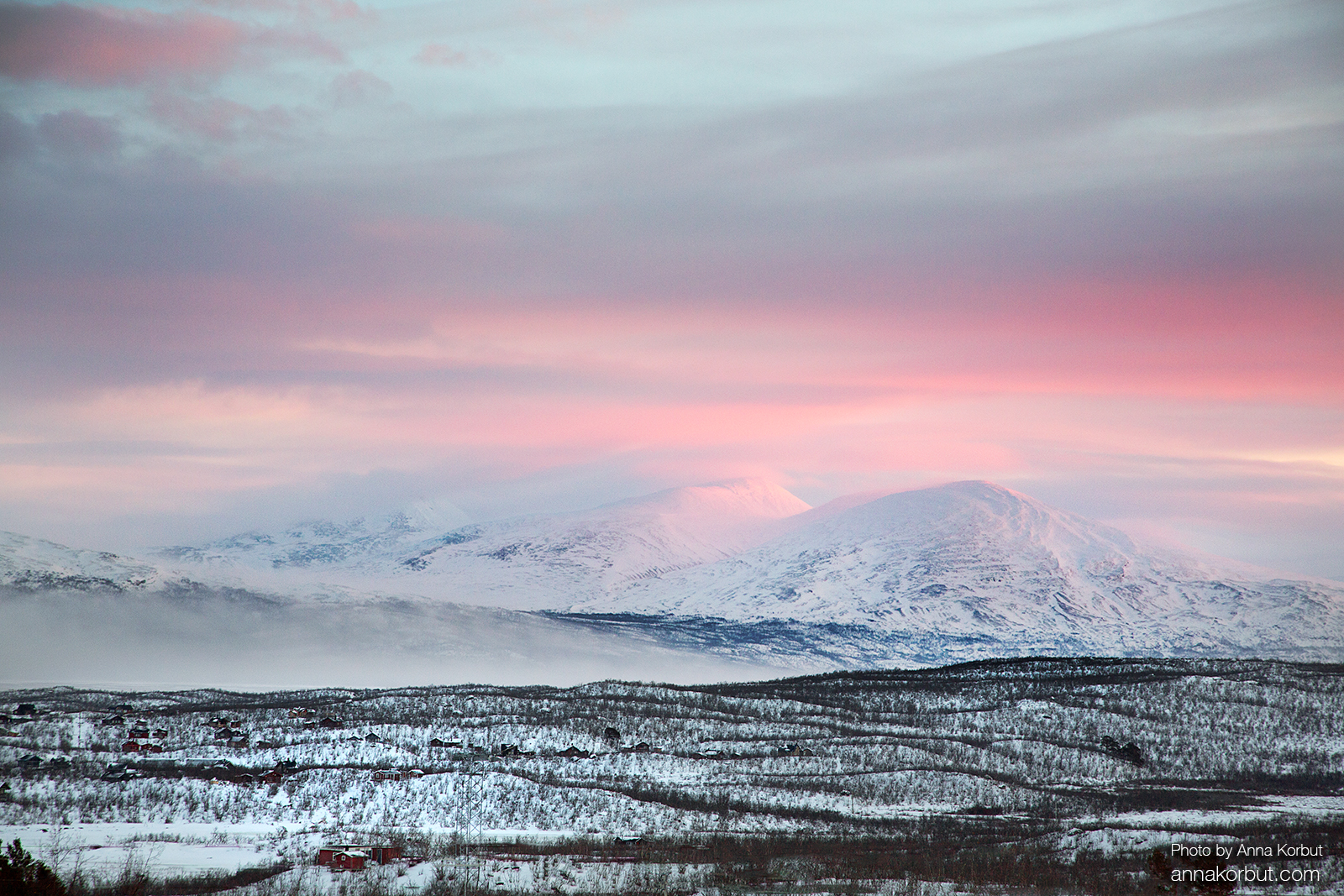
Abisko and the Gateway to Lapland
Northern Sweden looks like a fairy tale and yet feels strangely familiar. Snow-covered plains with bent birches and whimsical mountains, a piercing wind, and the northern lights overhead. Wandering alone across the white expanses feels like coming home. When even Iceland remains a land to the south, your perception of the world is turned upside down. The arch of the Lapporten valley, framed by the rugged silhouettes of the mountains Nissuntjårro (1,738 m) and Tjuonatjåkka (1,554 m), marks the gateway to Lapland. It is the most recognisable mountain silhouette in Abisko National Park. Now it lives with me in a hundred photographs and on my park badge.
 The national park covers 77 square kilometres and was established in 1909. It is part of the European Union’s Natura 2000 network of protected areas. Here, the Abiskojåkka river flows through a picturesque rocky canyon made of hard schists and dolomite rocks. Downstream, the river empties into Sweden’s largest lake, Torneträsk. The river delta and the entire park are home to a variety of birds and animals. Wolves and lynxes are elusive; you’re more likely to find their tracks in the snow, but you might spot a moose, hare, or ermine. Around 200 species of birds live here, including the golden eagle and the white-tailed eagle. In summer, the park blooms with Lapland rhododendron, Arctic arnica, mosses, heather, and even marsh orchids.
The national park covers 77 square kilometres and was established in 1909. It is part of the European Union’s Natura 2000 network of protected areas. Here, the Abiskojåkka river flows through a picturesque rocky canyon made of hard schists and dolomite rocks. Downstream, the river empties into Sweden’s largest lake, Torneträsk. The river delta and the entire park are home to a variety of birds and animals. Wolves and lynxes are elusive; you’re more likely to find their tracks in the snow, but you might spot a moose, hare, or ermine. Around 200 species of birds live here, including the golden eagle and the white-tailed eagle. In summer, the park blooms with Lapland rhododendron, Arctic arnica, mosses, heather, and even marsh orchids.
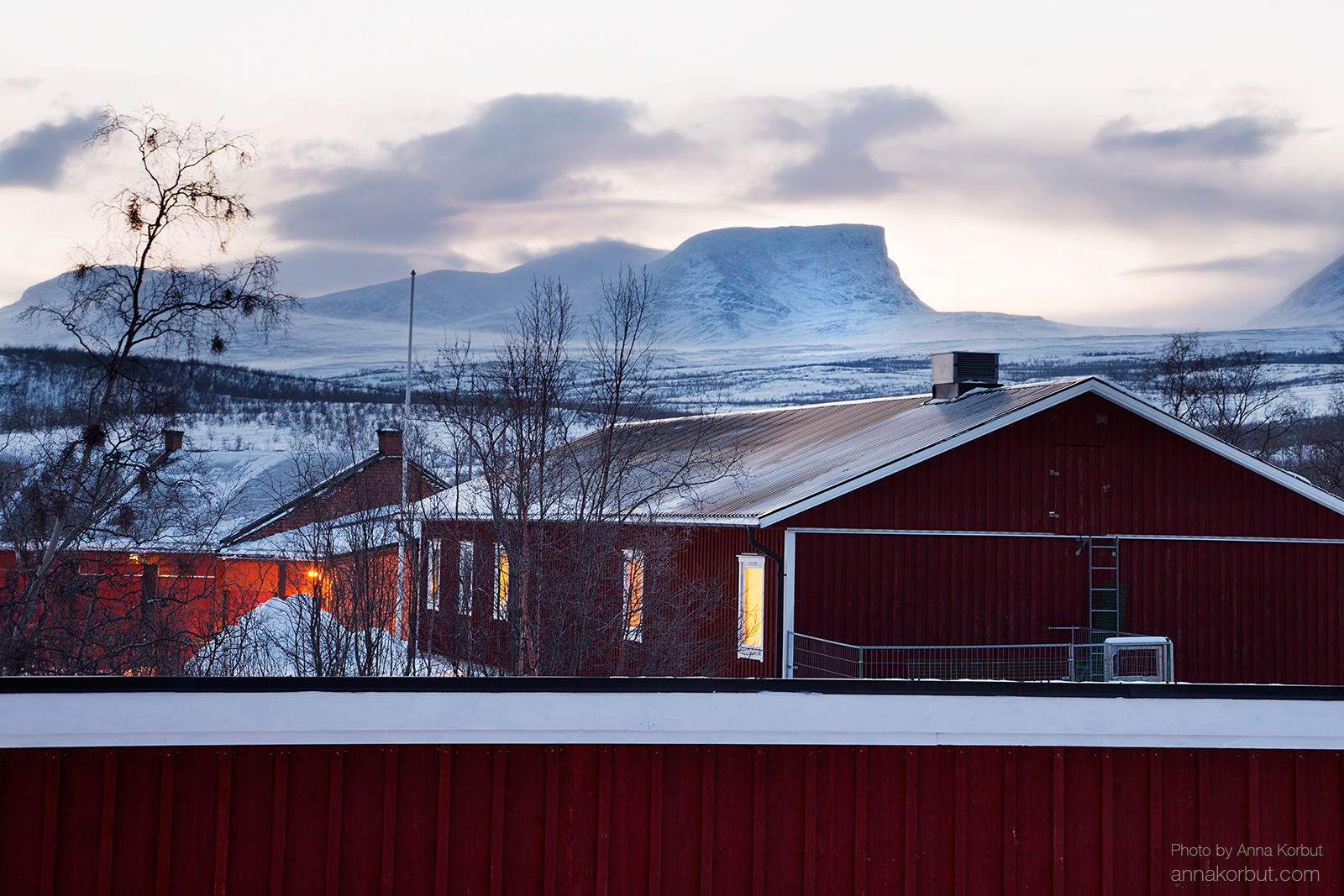
Life above the Arctic Circle is much the same as down south, except you wear more layers of clothing. In winter, the sun hides behind the mountains, and spring feels like a sunny extension of winter. When it’s -20°C outside, it’s hard to imagine this land green and singing, but in summer the valleys bloom, and the lakes sparkle under the bright sky of the endless polar day. Locals see the sun for the first time at the end of February. In winter, the sun stays behind the mountains for three months, with dawns gradually blending into sunsets. For a photographer, this is convenient: you can get a good night’s sleep, catch the sunrise at 9 am and the sunset at 3 pm, then relax and visit the sauna before heading out to chase the northern lights. In summer, the polar day lasts a whole month. A bit of wind from Lapland—dress warmly!
